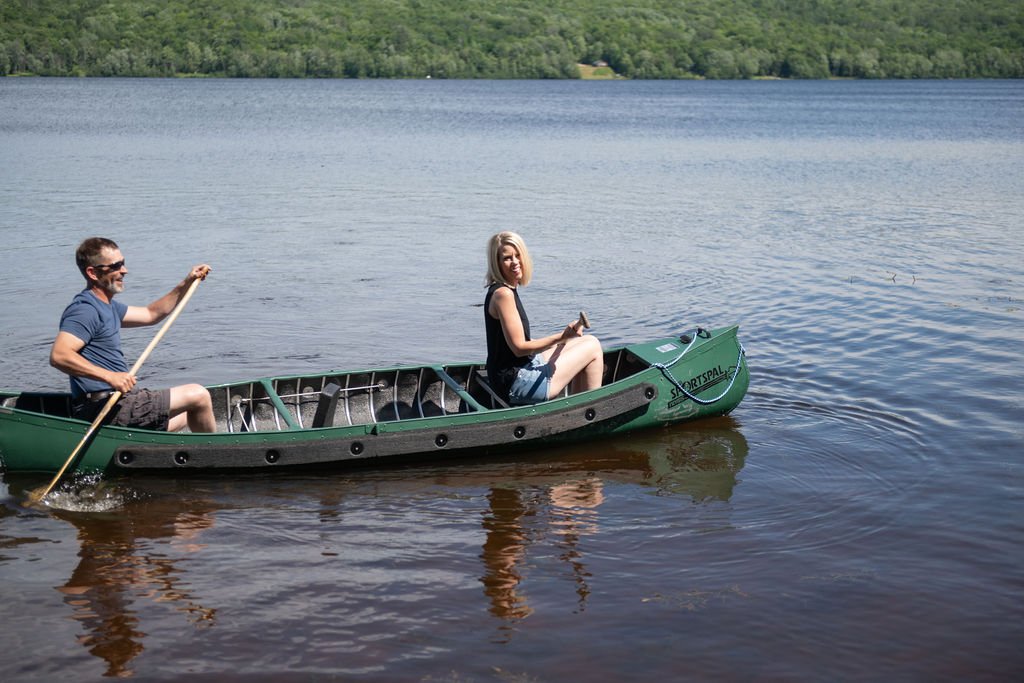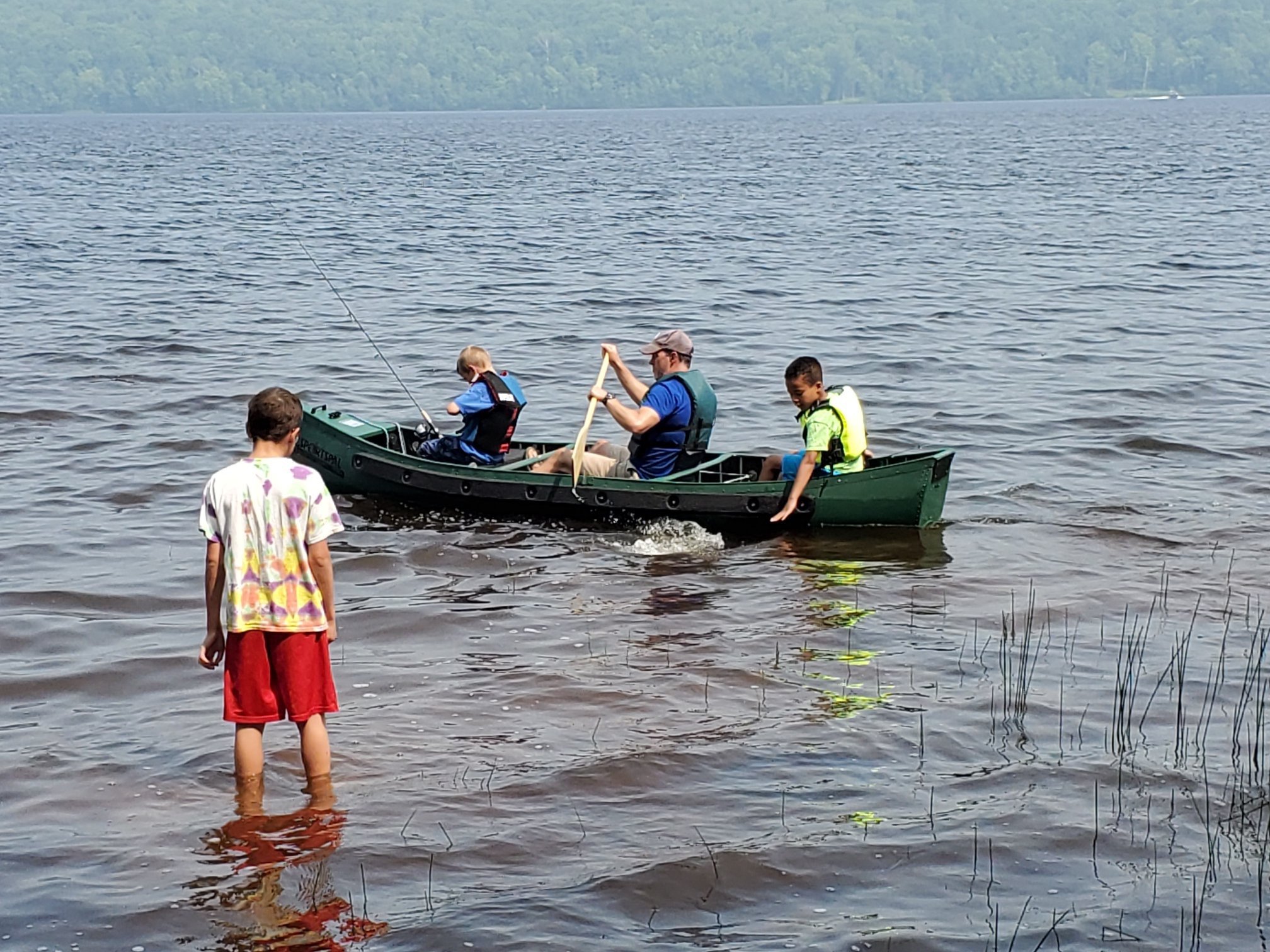Canoeing
Canoes date back to 7600 BC and were developed by cultures all over the world, including some designed for use with sails or outriggers. Until the mid-19th century, the canoe was an important means of transport for exploration and trade.
Historically, canoes were hollowed out logs (dugouts). Many indigenous peoples and Native Americans, including in the Great Lakes region, built canoes skinned with birch bark over a lightweight wooden frame. The canoes were light enough to be carried (portaged), yet could carry a lot of cargo, even in shallow water.
Construction materials later evolved to canvas on a wood frame and then to aluminum. Most modern canoes are made of molded plastic, fiberglass, or lighter weight Kevlar or graphite.
Canoeing is a fun recreational activity though paddling in tandem can be a challenge for the less experienced paddlers. This has resulted in the humorous nickname for canoes as “divorce boats!”
Some tips to remember to avoid the constant argument over the direction the canoe is moving:
🛶 The person in the back (stern) of the canoe is the driver. They control where the boat goes. The person occupying the front (bow) seat is there for extra power.
🛶 Paddling in sync is important. This means the stern paddler will need to match the cadence of the bow paddler's strokes, and the bow paddler will need to do their best to make smooth, consistent strokes.
I think the real key is concentrating less on form and just enjoying the experience. Don’t overthink it! With a little practice you’ll be gliding across the water effortlessly with barely a ripple.
Photos courtesy KLEM Studios, Terhi Tuominen, Elaine Sterrett Isely.




